Quick filters:
Hopping on one foot Stock Photos and Images
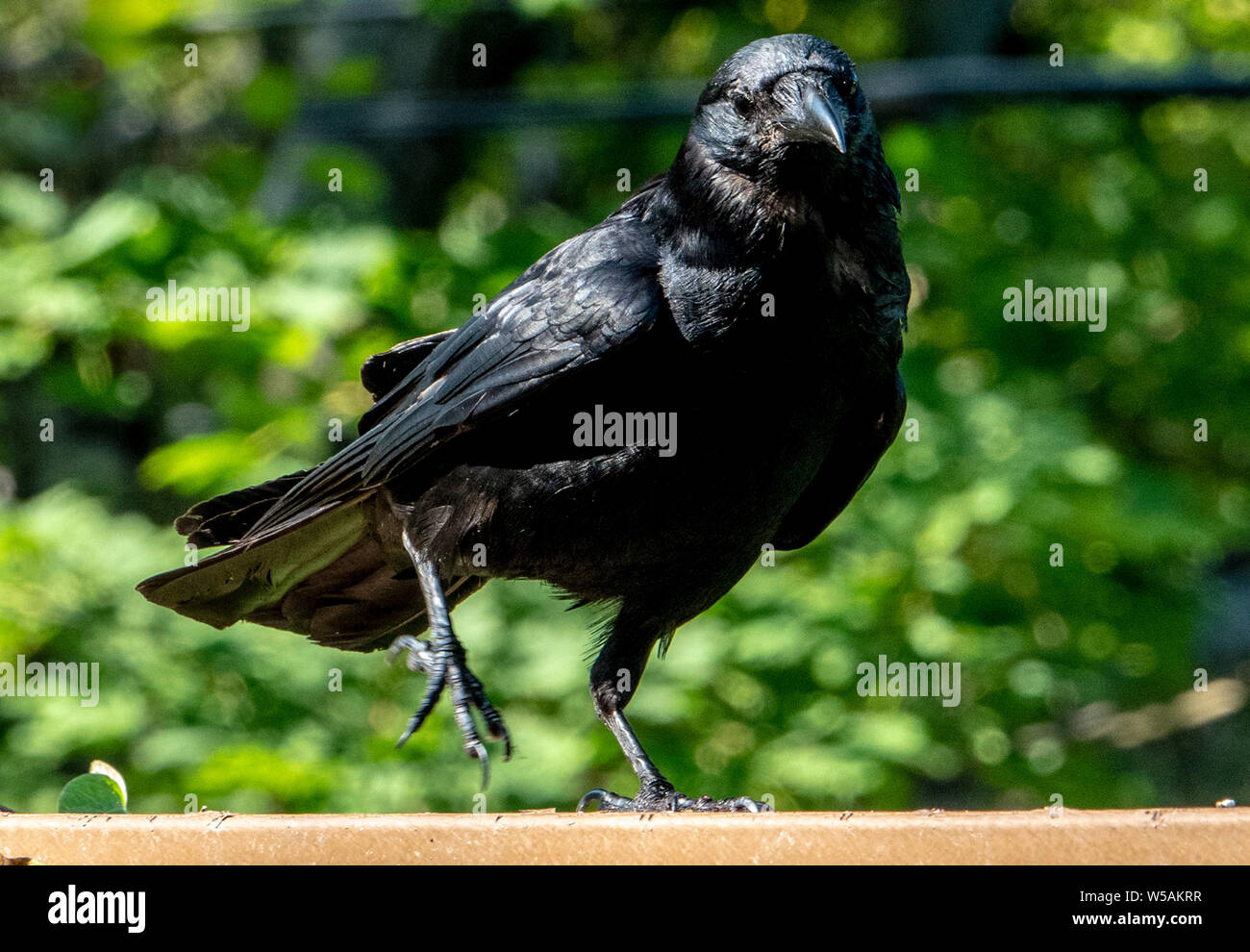 Hopping along Stock Photohttps://www.alamy.com/image-license-details/?v=1https://www.alamy.com/hopping-along-image261463883.html
Hopping along Stock Photohttps://www.alamy.com/image-license-details/?v=1https://www.alamy.com/hopping-along-image261463883.htmlRMW5AKRR–Hopping along
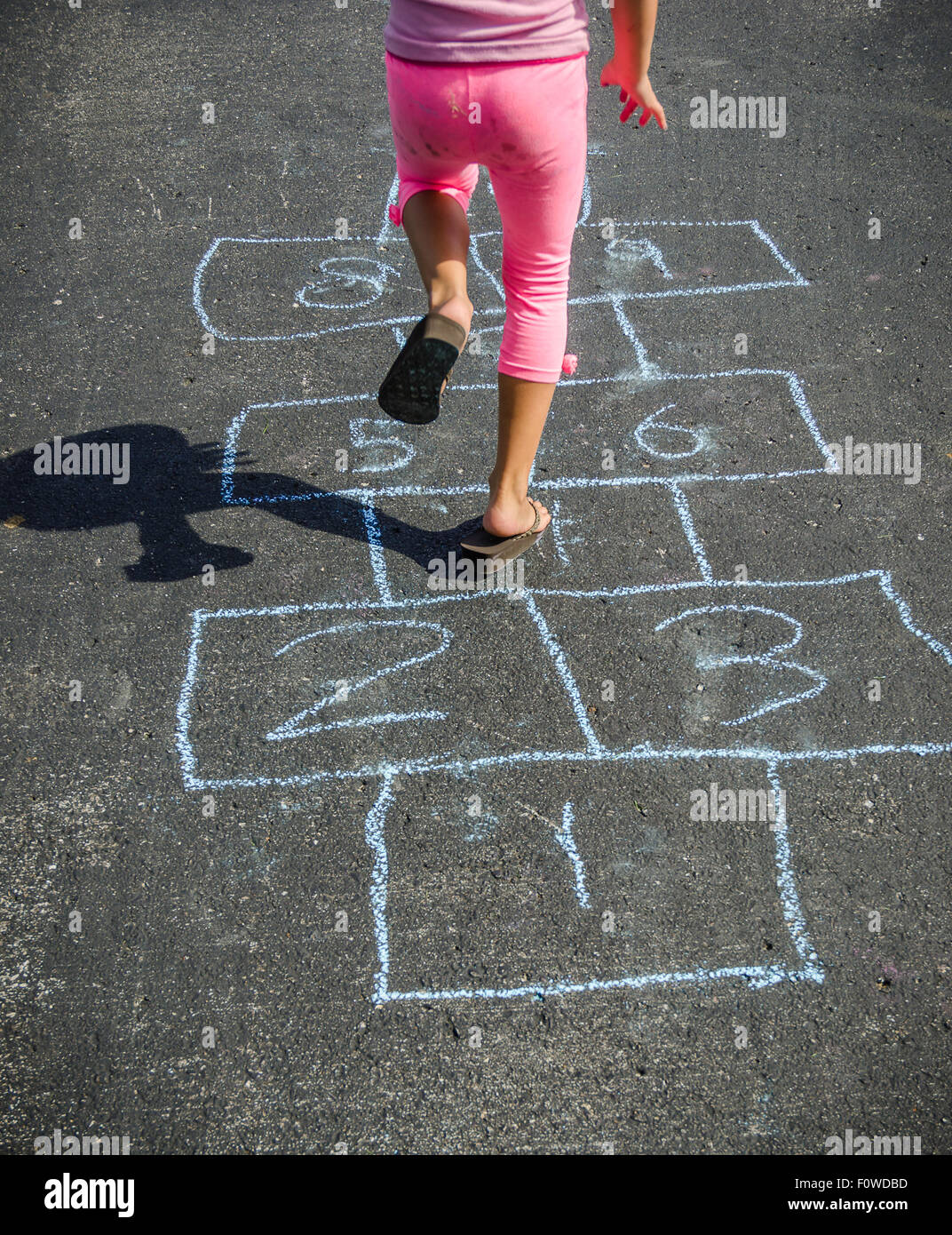 Young Girl Hopping While Playing a Game Outdoors on a Sunny Warm Day Wearing Pink Pants and Sandals Stock Photohttps://www.alamy.com/image-license-details/?v=1https://www.alamy.com/stock-photo-young-girl-hopping-while-playing-a-game-outdoors-on-a-sunny-warm-day-86611153.html
Young Girl Hopping While Playing a Game Outdoors on a Sunny Warm Day Wearing Pink Pants and Sandals Stock Photohttps://www.alamy.com/image-license-details/?v=1https://www.alamy.com/stock-photo-young-girl-hopping-while-playing-a-game-outdoors-on-a-sunny-warm-day-86611153.htmlRFF0WDBD–Young Girl Hopping While Playing a Game Outdoors on a Sunny Warm Day Wearing Pink Pants and Sandals
 Two fingers Stock Photohttps://www.alamy.com/image-license-details/?v=1https://www.alamy.com/two-fingers-image260515386.html
Two fingers Stock Photohttps://www.alamy.com/image-license-details/?v=1https://www.alamy.com/two-fingers-image260515386.htmlRMW3RE0X–Two fingers
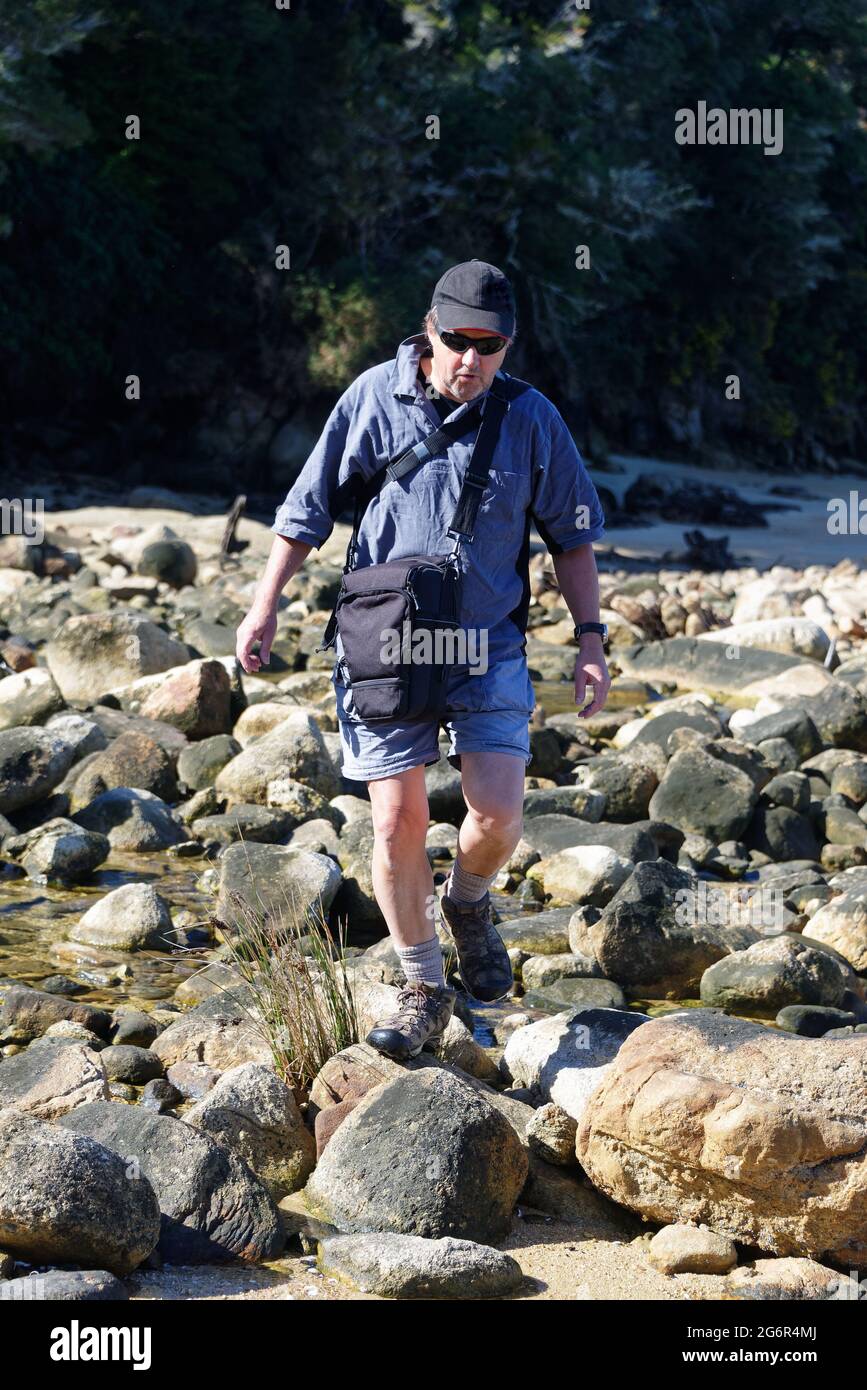 An older man is jumping across rocks on the shoreline Stock Photohttps://www.alamy.com/image-license-details/?v=1https://www.alamy.com/an-older-man-is-jumping-across-rocks-on-the-shoreline-image434455746.html
An older man is jumping across rocks on the shoreline Stock Photohttps://www.alamy.com/image-license-details/?v=1https://www.alamy.com/an-older-man-is-jumping-across-rocks-on-the-shoreline-image434455746.htmlRF2G6R4MJ–An older man is jumping across rocks on the shoreline
 The kangaroo a marsupial from the family Macropodidae sleeping on the ground Stock Photohttps://www.alamy.com/image-license-details/?v=1https://www.alamy.com/stock-photo-the-kangaroo-a-marsupial-from-the-family-macropodidae-sleeping-on-59353018.html
The kangaroo a marsupial from the family Macropodidae sleeping on the ground Stock Photohttps://www.alamy.com/image-license-details/?v=1https://www.alamy.com/stock-photo-the-kangaroo-a-marsupial-from-the-family-macropodidae-sleeping-on-59353018.htmlRMDCFNAJ–The kangaroo a marsupial from the family Macropodidae sleeping on the ground
 Black businessman skipping on city street Stock Photohttps://www.alamy.com/image-license-details/?v=1https://www.alamy.com/black-businessman-skipping-on-city-street-image472050503.html
Black businessman skipping on city street Stock Photohttps://www.alamy.com/image-license-details/?v=1https://www.alamy.com/black-businessman-skipping-on-city-street-image472050503.htmlRF2JBYN6F–Black businessman skipping on city street
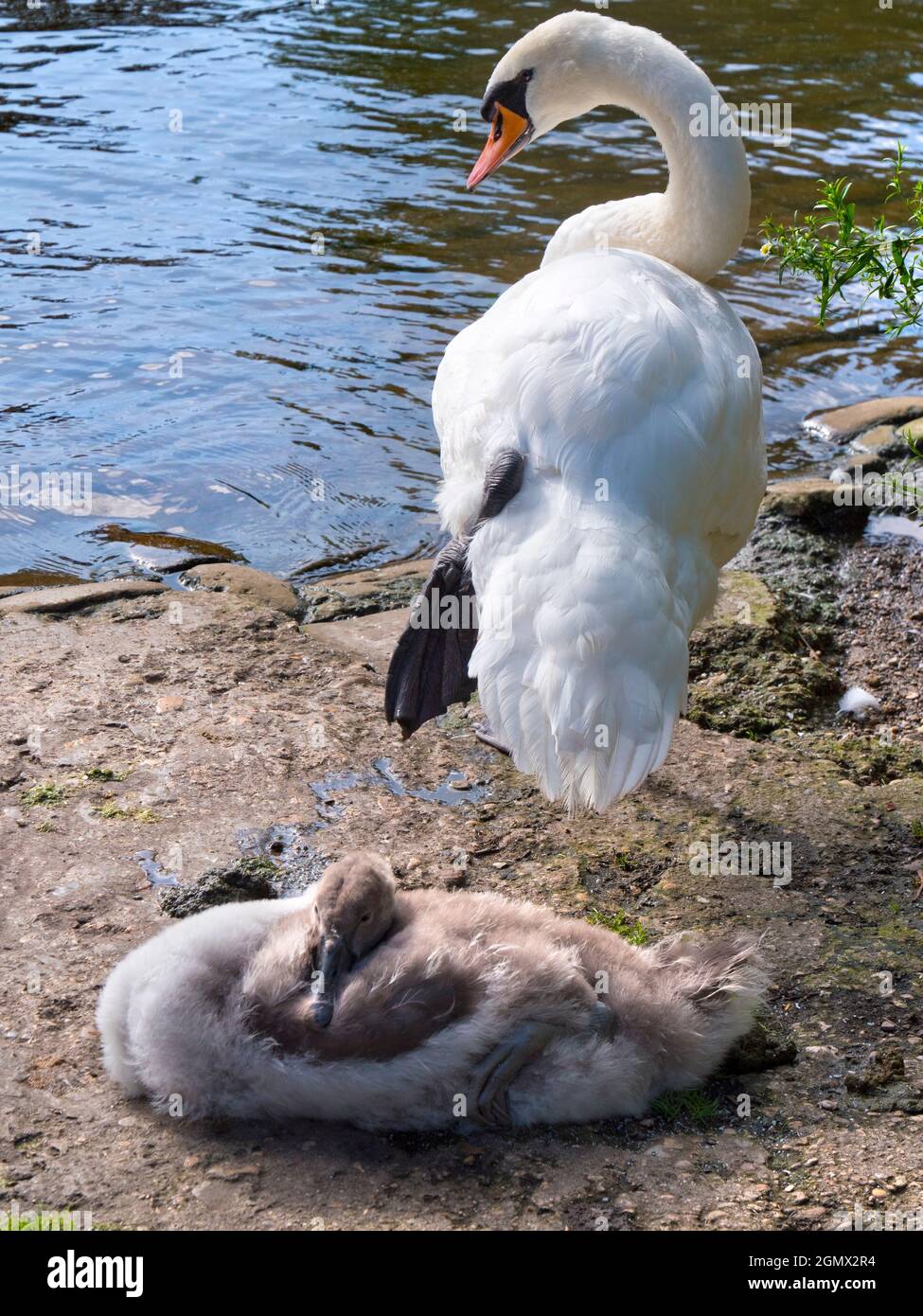 Abingdon, England - 17 August 2019 Saint Helen's Wharf is a noted beauty spot on the River Thames, just upstream of the medieval bridge at Abingdon Stock Photohttps://www.alamy.com/image-license-details/?v=1https://www.alamy.com/abingdon-england-17-august-2019-saint-helens-wharf-is-a-noted-beauty-spot-on-the-river-thames-just-upstream-of-the-medieval-bridge-at-abingdon-image443125288.html
Abingdon, England - 17 August 2019 Saint Helen's Wharf is a noted beauty spot on the River Thames, just upstream of the medieval bridge at Abingdon Stock Photohttps://www.alamy.com/image-license-details/?v=1https://www.alamy.com/abingdon-england-17-august-2019-saint-helens-wharf-is-a-noted-beauty-spot-on-the-river-thames-just-upstream-of-the-medieval-bridge-at-abingdon-image443125288.htmlRM2GMX2R4–Abingdon, England - 17 August 2019 Saint Helen's Wharf is a noted beauty spot on the River Thames, just upstream of the medieval bridge at Abingdon
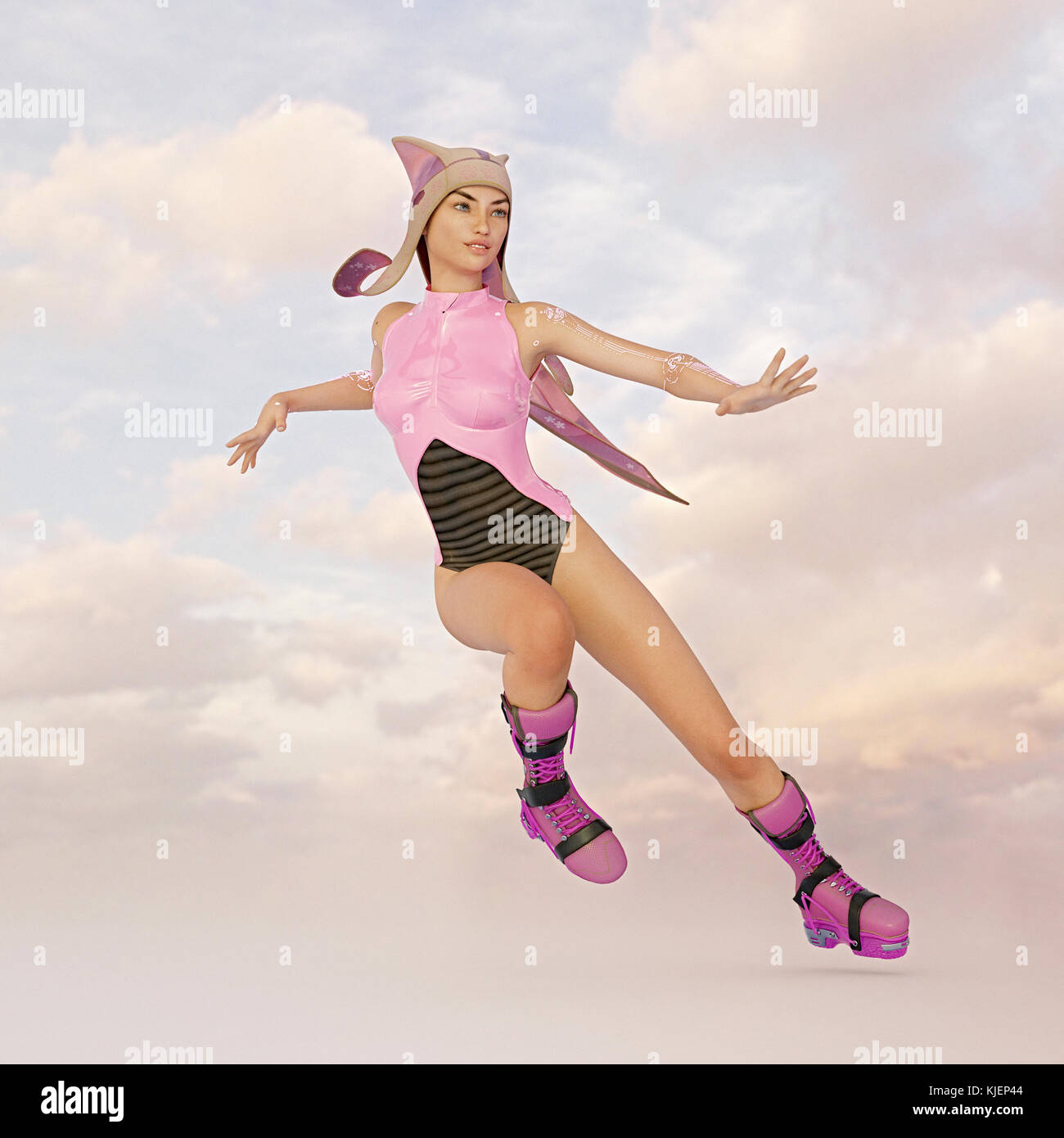 Futuristic woman wearing hovering boots in sky Stock Photohttps://www.alamy.com/image-license-details/?v=1https://www.alamy.com/stock-image-futuristic-woman-wearing-hovering-boots-in-sky-166281812.html
Futuristic woman wearing hovering boots in sky Stock Photohttps://www.alamy.com/image-license-details/?v=1https://www.alamy.com/stock-image-futuristic-woman-wearing-hovering-boots-in-sky-166281812.htmlRFKJEP44–Futuristic woman wearing hovering boots in sky
 People crossing very carefully on the partly submerged stepping stones at Ogmore castle ruins in this popular holiday area. Stock Photohttps://www.alamy.com/image-license-details/?v=1https://www.alamy.com/people-crossing-very-carefully-on-the-partly-submerged-stepping-stones-at-ogmore-castle-ruins-in-this-popular-holiday-area-image430201191.html
People crossing very carefully on the partly submerged stepping stones at Ogmore castle ruins in this popular holiday area. Stock Photohttps://www.alamy.com/image-license-details/?v=1https://www.alamy.com/people-crossing-very-carefully-on-the-partly-submerged-stepping-stones-at-ogmore-castle-ruins-in-this-popular-holiday-area-image430201191.htmlRM2FYWA07–People crossing very carefully on the partly submerged stepping stones at Ogmore castle ruins in this popular holiday area.
 Young man hobbles up steep steps, hopping on one foot with the aide of crutches. Stock Photohttps://www.alamy.com/image-license-details/?v=1https://www.alamy.com/young-man-hobbles-up-steep-steps-hopping-on-one-foot-with-the-aide-image66458982.html
Young man hobbles up steep steps, hopping on one foot with the aide of crutches. Stock Photohttps://www.alamy.com/image-license-details/?v=1https://www.alamy.com/young-man-hobbles-up-steep-steps-hopping-on-one-foot-with-the-aide-image66458982.htmlRMDT3D32–Young man hobbles up steep steps, hopping on one foot with the aide of crutches.
 Snowshoe Hare running on gravel road in Girdwood spring Southcentral Alaska Stock Photohttps://www.alamy.com/image-license-details/?v=1https://www.alamy.com/stock-photo-snowshoe-hare-running-on-gravel-road-in-girdwood-spring-southcentral-14201094.html
Snowshoe Hare running on gravel road in Girdwood spring Southcentral Alaska Stock Photohttps://www.alamy.com/image-license-details/?v=1https://www.alamy.com/stock-photo-snowshoe-hare-running-on-gravel-road-in-girdwood-spring-southcentral-14201094.htmlRMAGG3RK–Snowshoe Hare running on gravel road in Girdwood spring Southcentral Alaska
 A duck with an injured leg is standing on one leg Stock Photohttps://www.alamy.com/image-license-details/?v=1https://www.alamy.com/a-duck-with-an-injured-leg-is-standing-on-one-leg-image226819213.html
A duck with an injured leg is standing on one leg Stock Photohttps://www.alamy.com/image-license-details/?v=1https://www.alamy.com/a-duck-with-an-injured-leg-is-standing-on-one-leg-image226819213.htmlRMR50E65–A duck with an injured leg is standing on one leg
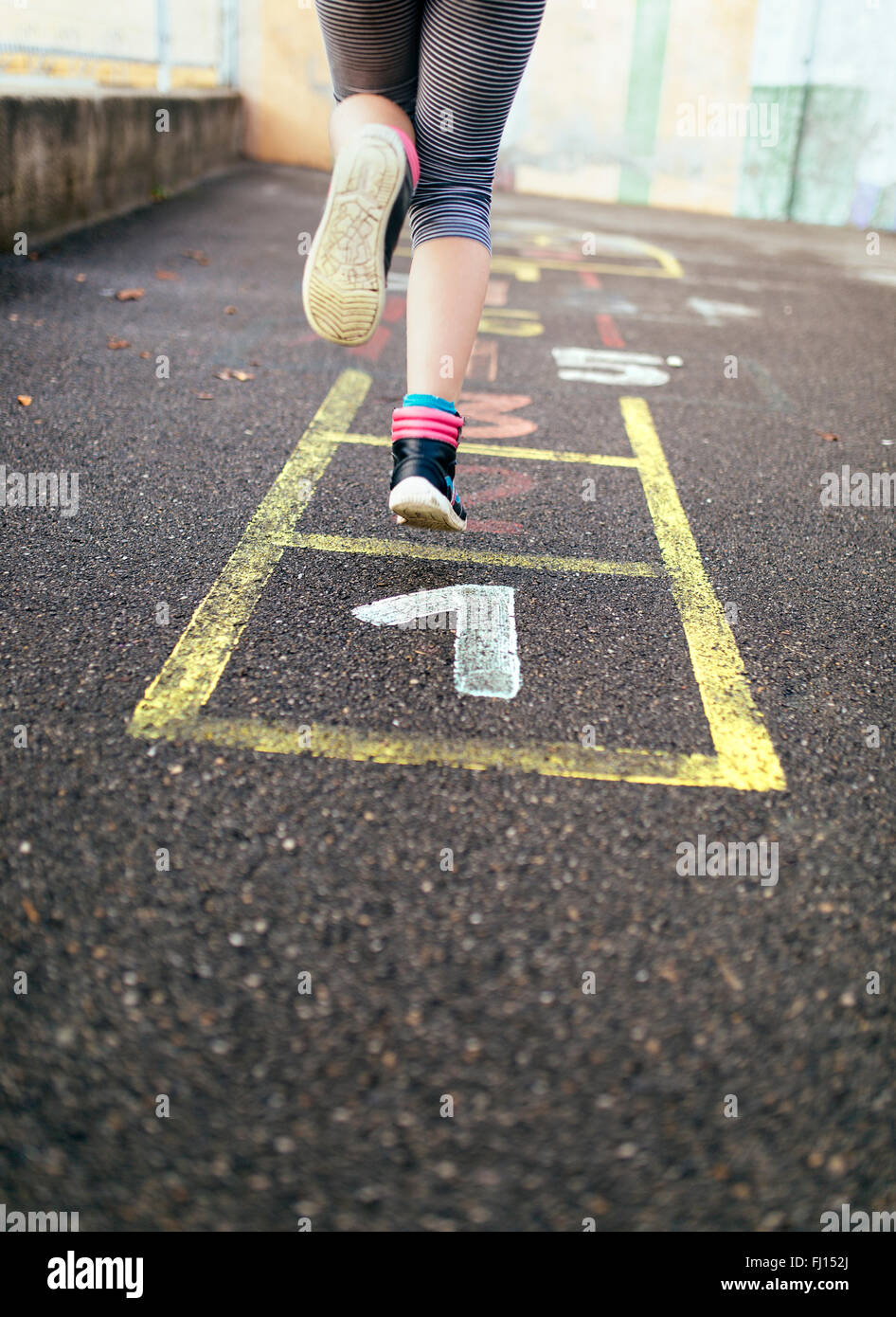 Girl hopscotching Stock Photohttps://www.alamy.com/image-license-details/?v=1https://www.alamy.com/stock-photo-girl-hopscotching-97141594.html
Girl hopscotching Stock Photohttps://www.alamy.com/image-license-details/?v=1https://www.alamy.com/stock-photo-girl-hopscotching-97141594.htmlRFFJ152J–Girl hopscotching
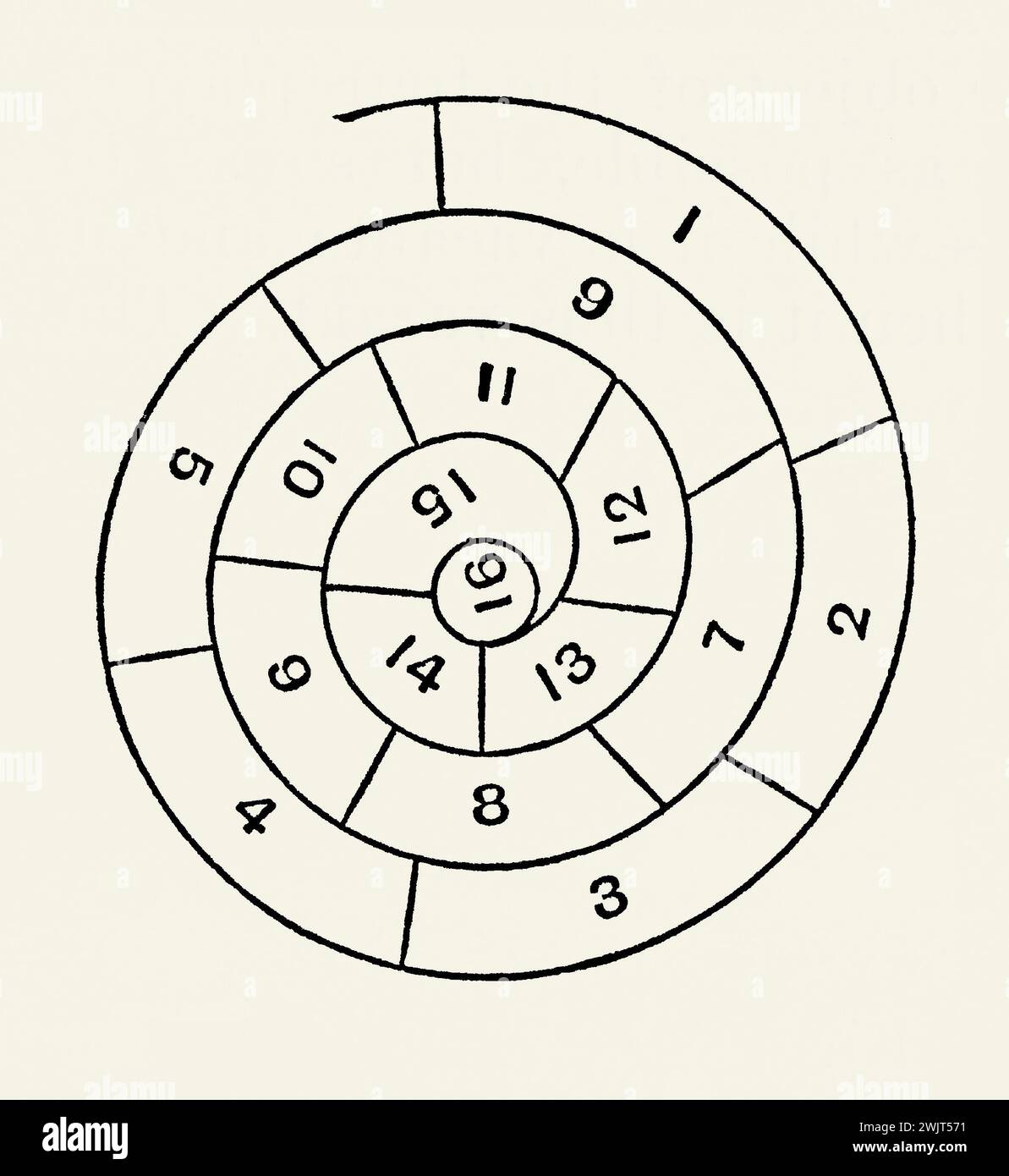 An old engraving showing a French variant for the court markings for playing a Hopscotch game called Escargot or Snail. It is from Victorian book of the 1890s on sports, games and pastimes. It is played within a spiral shape (like a snail shell), Players hop on one foot to a central rest spot and then back out again. Each player who succeeds may initial a space. The subsequent ‘hoppers’ cannot land on an initialised area. The game continues until it becomes impossible to reach the centre as too many spaces have initials in them. Stock Photohttps://www.alamy.com/image-license-details/?v=1https://www.alamy.com/an-old-engraving-showing-a-french-variant-for-the-court-markings-for-playing-a-hopscotch-game-called-escargot-or-snail-it-is-from-victorian-book-of-the-1890s-on-sports-games-and-pastimes-it-is-played-within-a-spiral-shape-like-a-snail-shell-players-hop-on-one-foot-to-a-central-rest-spot-and-then-back-out-again-each-player-who-succeeds-may-initial-a-space-the-subsequent-hoppers-cannot-land-on-an-initialised-area-the-game-continues-until-it-becomes-impossible-to-reach-the-centre-as-too-many-spaces-have-initials-in-them-image596747285.html
An old engraving showing a French variant for the court markings for playing a Hopscotch game called Escargot or Snail. It is from Victorian book of the 1890s on sports, games and pastimes. It is played within a spiral shape (like a snail shell), Players hop on one foot to a central rest spot and then back out again. Each player who succeeds may initial a space. The subsequent ‘hoppers’ cannot land on an initialised area. The game continues until it becomes impossible to reach the centre as too many spaces have initials in them. Stock Photohttps://www.alamy.com/image-license-details/?v=1https://www.alamy.com/an-old-engraving-showing-a-french-variant-for-the-court-markings-for-playing-a-hopscotch-game-called-escargot-or-snail-it-is-from-victorian-book-of-the-1890s-on-sports-games-and-pastimes-it-is-played-within-a-spiral-shape-like-a-snail-shell-players-hop-on-one-foot-to-a-central-rest-spot-and-then-back-out-again-each-player-who-succeeds-may-initial-a-space-the-subsequent-hoppers-cannot-land-on-an-initialised-area-the-game-continues-until-it-becomes-impossible-to-reach-the-centre-as-too-many-spaces-have-initials-in-them-image596747285.htmlRM2WJT571–An old engraving showing a French variant for the court markings for playing a Hopscotch game called Escargot or Snail. It is from Victorian book of the 1890s on sports, games and pastimes. It is played within a spiral shape (like a snail shell), Players hop on one foot to a central rest spot and then back out again. Each player who succeeds may initial a space. The subsequent ‘hoppers’ cannot land on an initialised area. The game continues until it becomes impossible to reach the centre as too many spaces have initials in them.
 Little girl playing hopscotch Stock Photohttps://www.alamy.com/image-license-details/?v=1https://www.alamy.com/stock-photo-little-girl-playing-hopscotch-82816393.html
Little girl playing hopscotch Stock Photohttps://www.alamy.com/image-license-details/?v=1https://www.alamy.com/stock-photo-little-girl-playing-hopscotch-82816393.htmlRFEPMH49–Little girl playing hopscotch
 . Gymnastic stories and plays for primary schools; physical excercises for the first two years of school . Eight) Qy Hands Doivn. Left, ) IV. Rising. V. Hopping on One Foot. Hands on Hips. Take position of Hands on Hips. Raise the left foot backward and hop lightly four times on the toes of the right foot. Without stopping hop on the left foot four times. Repeat the whole two or three times.At first let two rows take the exercise, followed by the others in quick succession. Signals Hop. Teacher count four. ^j {Running. (Arm Raising Sideways. F/ying. Run lightly on the toes around the room and Stock Photohttps://www.alamy.com/image-license-details/?v=1https://www.alamy.com/gymnastic-stories-and-plays-for-primary-schools-physical-excercises-for-the-first-two-years-of-school-eight-qy-hands-doivn-left-iv-rising-v-hopping-on-one-foot-hands-on-hips-take-position-of-hands-on-hips-raise-the-left-foot-backward-and-hop-lightly-four-times-on-the-toes-of-the-right-foot-without-stopping-hop-on-the-left-foot-four-times-repeat-the-whole-two-or-three-timesat-first-let-two-rows-take-the-exercise-followed-by-the-others-in-quick-succession-signals-hop-teacher-count-four-j-running-arm-raising-sideways-fying-run-lightly-on-the-toes-around-the-room-and-image370003769.html
. Gymnastic stories and plays for primary schools; physical excercises for the first two years of school . Eight) Qy Hands Doivn. Left, ) IV. Rising. V. Hopping on One Foot. Hands on Hips. Take position of Hands on Hips. Raise the left foot backward and hop lightly four times on the toes of the right foot. Without stopping hop on the left foot four times. Repeat the whole two or three times.At first let two rows take the exercise, followed by the others in quick succession. Signals Hop. Teacher count four. ^j {Running. (Arm Raising Sideways. F/ying. Run lightly on the toes around the room and Stock Photohttps://www.alamy.com/image-license-details/?v=1https://www.alamy.com/gymnastic-stories-and-plays-for-primary-schools-physical-excercises-for-the-first-two-years-of-school-eight-qy-hands-doivn-left-iv-rising-v-hopping-on-one-foot-hands-on-hips-take-position-of-hands-on-hips-raise-the-left-foot-backward-and-hop-lightly-four-times-on-the-toes-of-the-right-foot-without-stopping-hop-on-the-left-foot-four-times-repeat-the-whole-two-or-three-timesat-first-let-two-rows-take-the-exercise-followed-by-the-others-in-quick-succession-signals-hop-teacher-count-four-j-running-arm-raising-sideways-fying-run-lightly-on-the-toes-around-the-room-and-image370003769.htmlRM2CDY3G9–. Gymnastic stories and plays for primary schools; physical excercises for the first two years of school . Eight) Qy Hands Doivn. Left, ) IV. Rising. V. Hopping on One Foot. Hands on Hips. Take position of Hands on Hips. Raise the left foot backward and hop lightly four times on the toes of the right foot. Without stopping hop on the left foot four times. Repeat the whole two or three times.At first let two rows take the exercise, followed by the others in quick succession. Signals Hop. Teacher count four. ^j {Running. (Arm Raising Sideways. F/ying. Run lightly on the toes around the room and
 Children, girls playing safely in the street hopping on one foot. Elephant and Castle, SE London. 1970s Uk 1975 HOMER SYKES Stock Photohttps://www.alamy.com/image-license-details/?v=1https://www.alamy.com/stock-photo-children-girls-playing-safely-in-the-street-hopping-on-one-foot-elephant-53575777.html
Children, girls playing safely in the street hopping on one foot. Elephant and Castle, SE London. 1970s Uk 1975 HOMER SYKES Stock Photohttps://www.alamy.com/image-license-details/?v=1https://www.alamy.com/stock-photo-children-girls-playing-safely-in-the-street-hopping-on-one-foot-elephant-53575777.htmlRMD34GCH–Children, girls playing safely in the street hopping on one foot. Elephant and Castle, SE London. 1970s Uk 1975 HOMER SYKES
 Abingdon, England - 17 August 2019 Saint Helen's Wharf is a noted beauty spot on the River Thames, just upstream of the medieval bridge at Abingdon Stock Photohttps://www.alamy.com/image-license-details/?v=1https://www.alamy.com/abingdon-england-17-august-2019-saint-helens-wharf-is-a-noted-beauty-spot-on-the-river-thames-just-upstream-of-the-medieval-bridge-at-abingdon-image443125286.html
Abingdon, England - 17 August 2019 Saint Helen's Wharf is a noted beauty spot on the River Thames, just upstream of the medieval bridge at Abingdon Stock Photohttps://www.alamy.com/image-license-details/?v=1https://www.alamy.com/abingdon-england-17-august-2019-saint-helens-wharf-is-a-noted-beauty-spot-on-the-river-thames-just-upstream-of-the-medieval-bridge-at-abingdon-image443125286.htmlRM2GMX2R2–Abingdon, England - 17 August 2019 Saint Helen's Wharf is a noted beauty spot on the River Thames, just upstream of the medieval bridge at Abingdon
 People crossing very carefully on the partly submerged stepping stones at Ogmore castle ruins in this popular holiday area. Stock Photohttps://www.alamy.com/image-license-details/?v=1https://www.alamy.com/people-crossing-very-carefully-on-the-partly-submerged-stepping-stones-at-ogmore-castle-ruins-in-this-popular-holiday-area-image430201268.html
People crossing very carefully on the partly submerged stepping stones at Ogmore castle ruins in this popular holiday area. Stock Photohttps://www.alamy.com/image-license-details/?v=1https://www.alamy.com/people-crossing-very-carefully-on-the-partly-submerged-stepping-stones-at-ogmore-castle-ruins-in-this-popular-holiday-area-image430201268.htmlRM2FYWA30–People crossing very carefully on the partly submerged stepping stones at Ogmore castle ruins in this popular holiday area.
 Duck standing on one leg due to bad injury Stock Photohttps://www.alamy.com/image-license-details/?v=1https://www.alamy.com/duck-standing-on-one-leg-due-to-bad-injury-image226819215.html
Duck standing on one leg due to bad injury Stock Photohttps://www.alamy.com/image-license-details/?v=1https://www.alamy.com/duck-standing-on-one-leg-due-to-bad-injury-image226819215.htmlRMR50E67–Duck standing on one leg due to bad injury
 . Animal mechanism: a treatise on terrestrial and aërial locomotion. Animal locomotion; Flight. 132 ANIMAL MECHANISM. we get three tracings at once ; those of the pressures of the two feet, and that of the re-actions; these furnish fig. 32 We see here that the maxima of the curve of re-actions (line R) coincide with the pressures. Thus, by their united energy, the two legs raise the body, and then let it fall again at the moment when they bend and prepare to act afresh. Hopping on one foot gives the tracings (fig. 33) which only,consist in the pressure and rise of a single foot. The elevations Stock Photohttps://www.alamy.com/image-license-details/?v=1https://www.alamy.com/animal-mechanism-a-treatise-on-terrestrial-and-arial-locomotion-animal-locomotion-flight-132-animal-mechanism-we-get-three-tracings-at-once-those-of-the-pressures-of-the-two-feet-and-that-of-the-re-actions-these-furnish-fig-32-we-see-here-that-the-maxima-of-the-curve-of-re-actions-line-r-coincide-with-the-pressures-thus-by-their-united-energy-the-two-legs-raise-the-body-and-then-let-it-fall-again-at-the-moment-when-they-bend-and-prepare-to-act-afresh-hopping-on-one-foot-gives-the-tracings-fig-33-which-onlyconsist-in-the-pressure-and-rise-of-a-single-foot-the-elevations-image236749569.html
. Animal mechanism: a treatise on terrestrial and aërial locomotion. Animal locomotion; Flight. 132 ANIMAL MECHANISM. we get three tracings at once ; those of the pressures of the two feet, and that of the re-actions; these furnish fig. 32 We see here that the maxima of the curve of re-actions (line R) coincide with the pressures. Thus, by their united energy, the two legs raise the body, and then let it fall again at the moment when they bend and prepare to act afresh. Hopping on one foot gives the tracings (fig. 33) which only,consist in the pressure and rise of a single foot. The elevations Stock Photohttps://www.alamy.com/image-license-details/?v=1https://www.alamy.com/animal-mechanism-a-treatise-on-terrestrial-and-arial-locomotion-animal-locomotion-flight-132-animal-mechanism-we-get-three-tracings-at-once-those-of-the-pressures-of-the-two-feet-and-that-of-the-re-actions-these-furnish-fig-32-we-see-here-that-the-maxima-of-the-curve-of-re-actions-line-r-coincide-with-the-pressures-thus-by-their-united-energy-the-two-legs-raise-the-body-and-then-let-it-fall-again-at-the-moment-when-they-bend-and-prepare-to-act-afresh-hopping-on-one-foot-gives-the-tracings-fig-33-which-onlyconsist-in-the-pressure-and-rise-of-a-single-foot-the-elevations-image236749569.htmlRMRN4TDN–. Animal mechanism: a treatise on terrestrial and aërial locomotion. Animal locomotion; Flight. 132 ANIMAL MECHANISM. we get three tracings at once ; those of the pressures of the two feet, and that of the re-actions; these furnish fig. 32 We see here that the maxima of the curve of re-actions (line R) coincide with the pressures. Thus, by their united energy, the two legs raise the body, and then let it fall again at the moment when they bend and prepare to act afresh. Hopping on one foot gives the tracings (fig. 33) which only,consist in the pressure and rise of a single foot. The elevations
 Lectures on nervous diseases from the standpoint of cerebral and spinal localization, and the later methods employed in the diagnosis and treatment of these affections . is extremely slow, because the length of the step (if it may be so called)is very short. The heel of one foot rarely passes the limit of the toeof its fellow, if the paraplegia is well developed. This gait differs fromthat of spastic paraplegia chiefly in the absence of the stitthess of the legsand the interlocking of the knees, which are both present in the other.The so-called hopping gait is not developed as in the other for Stock Photohttps://www.alamy.com/image-license-details/?v=1https://www.alamy.com/lectures-on-nervous-diseases-from-the-standpoint-of-cerebral-and-spinal-localization-and-the-later-methods-employed-in-the-diagnosis-and-treatment-of-these-affections-is-extremely-slow-because-the-length-of-the-step-if-it-may-be-so-calledis-very-short-the-heel-of-one-foot-rarely-passes-the-limit-of-the-toeof-its-fellow-if-the-paraplegia-is-well-developed-this-gait-differs-fromthat-of-spastic-paraplegia-chiefly-in-the-absence-of-the-stitthess-of-the-legsand-the-interlocking-of-the-knees-which-are-both-present-in-the-otherthe-so-called-hopping-gait-is-not-developed-as-in-the-other-for-image342770566.html
Lectures on nervous diseases from the standpoint of cerebral and spinal localization, and the later methods employed in the diagnosis and treatment of these affections . is extremely slow, because the length of the step (if it may be so called)is very short. The heel of one foot rarely passes the limit of the toeof its fellow, if the paraplegia is well developed. This gait differs fromthat of spastic paraplegia chiefly in the absence of the stitthess of the legsand the interlocking of the knees, which are both present in the other.The so-called hopping gait is not developed as in the other for Stock Photohttps://www.alamy.com/image-license-details/?v=1https://www.alamy.com/lectures-on-nervous-diseases-from-the-standpoint-of-cerebral-and-spinal-localization-and-the-later-methods-employed-in-the-diagnosis-and-treatment-of-these-affections-is-extremely-slow-because-the-length-of-the-step-if-it-may-be-so-calledis-very-short-the-heel-of-one-foot-rarely-passes-the-limit-of-the-toeof-its-fellow-if-the-paraplegia-is-well-developed-this-gait-differs-fromthat-of-spastic-paraplegia-chiefly-in-the-absence-of-the-stitthess-of-the-legsand-the-interlocking-of-the-knees-which-are-both-present-in-the-otherthe-so-called-hopping-gait-is-not-developed-as-in-the-other-for-image342770566.htmlRM2AWJF9X–Lectures on nervous diseases from the standpoint of cerebral and spinal localization, and the later methods employed in the diagnosis and treatment of these affections . is extremely slow, because the length of the step (if it may be so called)is very short. The heel of one foot rarely passes the limit of the toeof its fellow, if the paraplegia is well developed. This gait differs fromthat of spastic paraplegia chiefly in the absence of the stitthess of the legsand the interlocking of the knees, which are both present in the other.The so-called hopping gait is not developed as in the other for
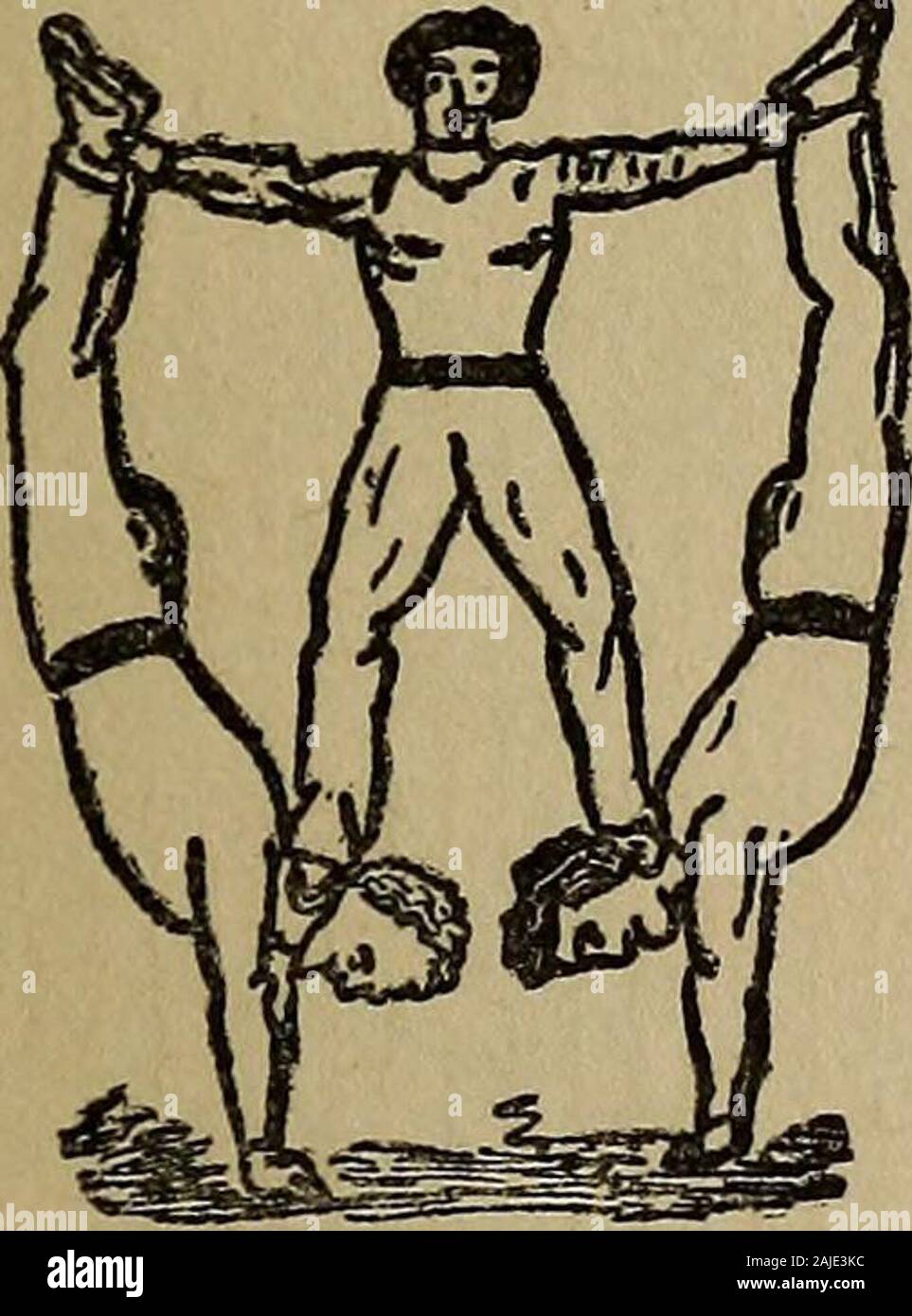 How to, a book of tumbling, tricks, pyramids and games; . 123 Fox in His Hole—Make a circle to representthe hole. Someone is chosen to be the foxand everyone else runs at large. The fox comesout of his hole, crying, The fox is out of his hole/and hops around on one foot, having a knottedhandkerchief in his hand, with which he tries totag someone. If the fox stops hopping and goesabout on two feet while out of his hole, all unite. HOW TO 75 to beat him back into it, using their knotted hand-kerchiefs for the purpose, and the fox has a hardtime of it until he either hops again or runs backto his Stock Photohttps://www.alamy.com/image-license-details/?v=1https://www.alamy.com/how-to-a-book-of-tumbling-tricks-pyramids-and-games-123-fox-in-his-holemake-a-circle-to-representthe-hole-someone-is-chosen-to-be-the-foxand-everyone-else-runs-at-large-the-fox-comesout-of-his-hole-crying-the-fox-is-out-of-his-holeand-hops-around-on-one-foot-having-a-knottedhandkerchief-in-his-hand-with-which-he-tries-totag-someone-if-the-fox-stops-hopping-and-goesabout-on-two-feet-while-out-of-his-hole-all-unite-how-to-75-to-beat-him-back-into-it-using-their-knotted-hand-kerchiefs-for-the-purpose-and-the-fox-has-a-hardtime-of-it-until-he-either-hops-again-or-runs-backto-his-image338371024.html
How to, a book of tumbling, tricks, pyramids and games; . 123 Fox in His Hole—Make a circle to representthe hole. Someone is chosen to be the foxand everyone else runs at large. The fox comesout of his hole, crying, The fox is out of his hole/and hops around on one foot, having a knottedhandkerchief in his hand, with which he tries totag someone. If the fox stops hopping and goesabout on two feet while out of his hole, all unite. HOW TO 75 to beat him back into it, using their knotted hand-kerchiefs for the purpose, and the fox has a hardtime of it until he either hops again or runs backto his Stock Photohttps://www.alamy.com/image-license-details/?v=1https://www.alamy.com/how-to-a-book-of-tumbling-tricks-pyramids-and-games-123-fox-in-his-holemake-a-circle-to-representthe-hole-someone-is-chosen-to-be-the-foxand-everyone-else-runs-at-large-the-fox-comesout-of-his-hole-crying-the-fox-is-out-of-his-holeand-hops-around-on-one-foot-having-a-knottedhandkerchief-in-his-hand-with-which-he-tries-totag-someone-if-the-fox-stops-hopping-and-goesabout-on-two-feet-while-out-of-his-hole-all-unite-how-to-75-to-beat-him-back-into-it-using-their-knotted-hand-kerchiefs-for-the-purpose-and-the-fox-has-a-hardtime-of-it-until-he-either-hops-again-or-runs-backto-his-image338371024.htmlRM2AJE3KC–How to, a book of tumbling, tricks, pyramids and games; . 123 Fox in His Hole—Make a circle to representthe hole. Someone is chosen to be the foxand everyone else runs at large. The fox comesout of his hole, crying, The fox is out of his hole/and hops around on one foot, having a knottedhandkerchief in his hand, with which he tries totag someone. If the fox stops hopping and goesabout on two feet while out of his hole, all unite. HOW TO 75 to beat him back into it, using their knotted hand-kerchiefs for the purpose, and the fox has a hardtime of it until he either hops again or runs backto his
 Applied anatomy and kinesiology, the mechanism of muscular movement . Fig. 173 Gymnastic Dancing.—Gymnastic dancing includes a great varietyof movements on the feet and involves leaping, poising, hopping GYMNASTIC MOVEMENTS 291 and bending. It brings into action the extensors of the ankles,knees, hips and spine strongly and the flexors of the limbs andtrunk moderately, with mild action of the arm-raising muscles.The abductors of the hip-joints are strongly developed by theemphasis placed on poising and alighting on one foot.. Figs. 173 and 174. Fig. 174-Characteristic positions in gymnastic da Stock Photohttps://www.alamy.com/image-license-details/?v=1https://www.alamy.com/applied-anatomy-and-kinesiology-the-mechanism-of-muscular-movement-fig-173-gymnastic-dancinggymnastic-dancing-includes-a-great-varietyof-movements-on-the-feet-and-involves-leaping-poising-hopping-gymnastic-movements-291-and-bending-it-brings-into-action-the-extensors-of-the-anklesknees-hips-and-spine-strongly-and-the-flexors-of-the-limbs-andtrunk-moderately-with-mild-action-of-the-arm-raising-musclesthe-abductors-of-the-hip-joints-are-strongly-developed-by-theemphasis-placed-on-poising-and-alighting-on-one-foot-figs-173-and-174-fig-174-characteristic-positions-in-gymnastic-da-image342660427.html
Applied anatomy and kinesiology, the mechanism of muscular movement . Fig. 173 Gymnastic Dancing.—Gymnastic dancing includes a great varietyof movements on the feet and involves leaping, poising, hopping GYMNASTIC MOVEMENTS 291 and bending. It brings into action the extensors of the ankles,knees, hips and spine strongly and the flexors of the limbs andtrunk moderately, with mild action of the arm-raising muscles.The abductors of the hip-joints are strongly developed by theemphasis placed on poising and alighting on one foot.. Figs. 173 and 174. Fig. 174-Characteristic positions in gymnastic da Stock Photohttps://www.alamy.com/image-license-details/?v=1https://www.alamy.com/applied-anatomy-and-kinesiology-the-mechanism-of-muscular-movement-fig-173-gymnastic-dancinggymnastic-dancing-includes-a-great-varietyof-movements-on-the-feet-and-involves-leaping-poising-hopping-gymnastic-movements-291-and-bending-it-brings-into-action-the-extensors-of-the-anklesknees-hips-and-spine-strongly-and-the-flexors-of-the-limbs-andtrunk-moderately-with-mild-action-of-the-arm-raising-musclesthe-abductors-of-the-hip-joints-are-strongly-developed-by-theemphasis-placed-on-poising-and-alighting-on-one-foot-figs-173-and-174-fig-174-characteristic-positions-in-gymnastic-da-image342660427.htmlRM2AWDETB–Applied anatomy and kinesiology, the mechanism of muscular movement . Fig. 173 Gymnastic Dancing.—Gymnastic dancing includes a great varietyof movements on the feet and involves leaping, poising, hopping GYMNASTIC MOVEMENTS 291 and bending. It brings into action the extensors of the ankles,knees, hips and spine strongly and the flexors of the limbs andtrunk moderately, with mild action of the arm-raising muscles.The abductors of the hip-joints are strongly developed by theemphasis placed on poising and alighting on one foot.. Figs. 173 and 174. Fig. 174-Characteristic positions in gymnastic da
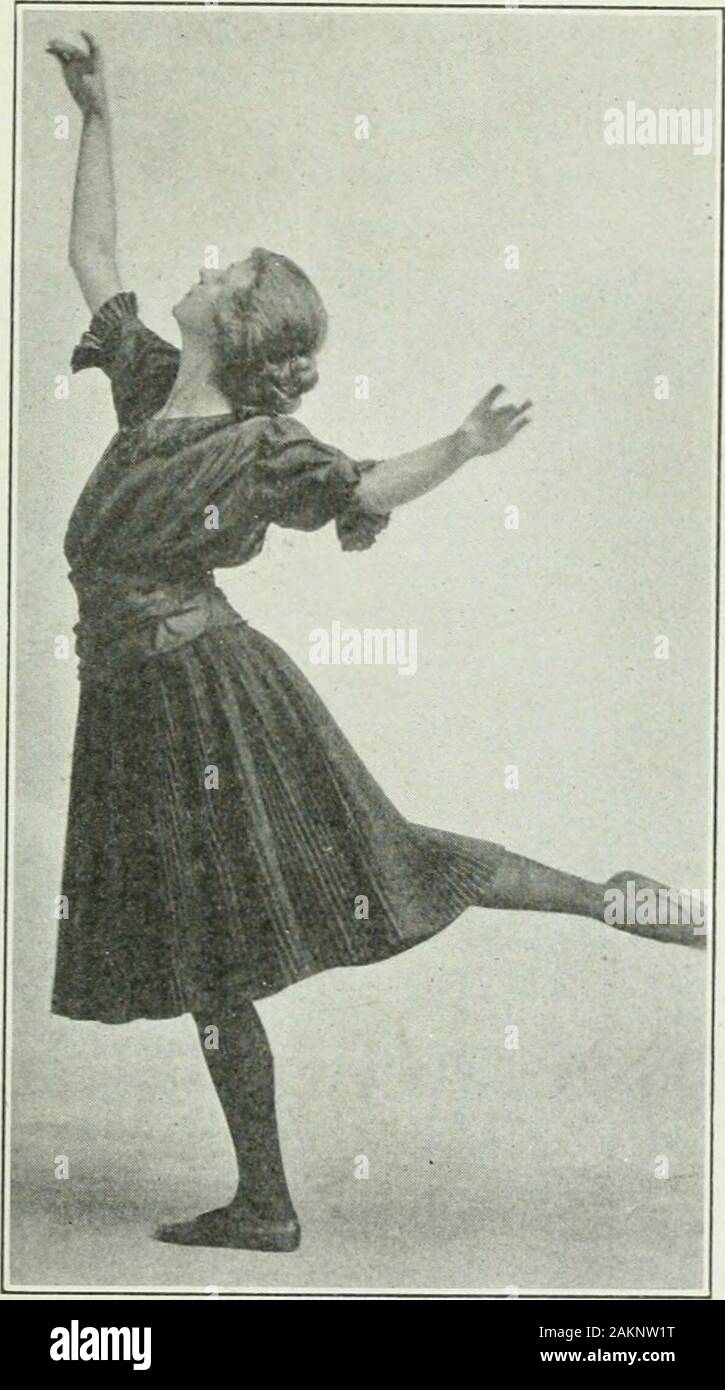 Applied anatomy and kinesiology; the mechanism of muscular movement . Fig. 173 Gymnastic Dancing.—Gymnastic dancing includes a great varietyof movements on the feet and involves lea.pmg, poising, hopping GYMNASTIC MOVEMENTS 291 and bending. It brings into action the extensors of the ankles,knees, hips and spine strongly and the flexors of the liinbs andtrunk moderately, with mild action of the arm-raising muscles.The abductors of the hip-joints are strongly developed by theemphasis placed on poising and alighting on one foot.. Fig. 174Figs. 173 and 174.—Characteristic positions in gj-mnastic d Stock Photohttps://www.alamy.com/image-license-details/?v=1https://www.alamy.com/applied-anatomy-and-kinesiology-the-mechanism-of-muscular-movement-fig-173-gymnastic-dancinggymnastic-dancing-includes-a-great-varietyof-movements-on-the-feet-and-involves-leapmg-poising-hopping-gymnastic-movements-291-and-bending-it-brings-into-action-the-extensors-of-the-anklesknees-hips-and-spine-strongly-and-the-flexors-of-the-liinbs-andtrunk-moderately-with-mild-action-of-the-arm-raising-musclesthe-abductors-of-the-hip-joints-are-strongly-developed-by-theemphasis-placed-on-poising-and-alighting-on-one-foot-fig-174figs-173-and-174characteristic-positions-in-gj-mnastic-d-image339156100.html
Applied anatomy and kinesiology; the mechanism of muscular movement . Fig. 173 Gymnastic Dancing.—Gymnastic dancing includes a great varietyof movements on the feet and involves lea.pmg, poising, hopping GYMNASTIC MOVEMENTS 291 and bending. It brings into action the extensors of the ankles,knees, hips and spine strongly and the flexors of the liinbs andtrunk moderately, with mild action of the arm-raising muscles.The abductors of the hip-joints are strongly developed by theemphasis placed on poising and alighting on one foot.. Fig. 174Figs. 173 and 174.—Characteristic positions in gj-mnastic d Stock Photohttps://www.alamy.com/image-license-details/?v=1https://www.alamy.com/applied-anatomy-and-kinesiology-the-mechanism-of-muscular-movement-fig-173-gymnastic-dancinggymnastic-dancing-includes-a-great-varietyof-movements-on-the-feet-and-involves-leapmg-poising-hopping-gymnastic-movements-291-and-bending-it-brings-into-action-the-extensors-of-the-anklesknees-hips-and-spine-strongly-and-the-flexors-of-the-liinbs-andtrunk-moderately-with-mild-action-of-the-arm-raising-musclesthe-abductors-of-the-hip-joints-are-strongly-developed-by-theemphasis-placed-on-poising-and-alighting-on-one-foot-fig-174figs-173-and-174characteristic-positions-in-gj-mnastic-d-image339156100.htmlRM2AKNW1T–Applied anatomy and kinesiology; the mechanism of muscular movement . Fig. 173 Gymnastic Dancing.—Gymnastic dancing includes a great varietyof movements on the feet and involves lea.pmg, poising, hopping GYMNASTIC MOVEMENTS 291 and bending. It brings into action the extensors of the ankles,knees, hips and spine strongly and the flexors of the liinbs andtrunk moderately, with mild action of the arm-raising muscles.The abductors of the hip-joints are strongly developed by theemphasis placed on poising and alighting on one foot.. Fig. 174Figs. 173 and 174.—Characteristic positions in gj-mnastic d
 Health, strength & power; . HEALTH, STRENGTH, AND POWER Exercise 21LOCOMOTIVE Position — Stand on the right leg, draw up the left leg,extend the right arm, and draw back the left armto the position shown in Fig. 41. Movement — Eeverse the position as described above, byputting down the left foot, elevating the right, andat the same time extending the left arm forward,and drawing back the right arm, as shown in Fig.42. Continue, alternately hopping from one foot tothe other as in runnincr. Times — 30 — 60 — 100. Eate per minute, 60 — 80 —100. Caution — In doing this exercise, be sure and move t Stock Photohttps://www.alamy.com/image-license-details/?v=1https://www.alamy.com/health-strength-power-health-strength-and-power-exercise-21locomotive-position-stand-on-the-right-leg-draw-up-the-left-legextend-the-right-arm-and-draw-back-the-left-armto-the-position-shown-in-fig-41-movement-eeverse-the-position-as-described-above-byputting-down-the-left-foot-elevating-the-right-andat-the-same-time-extending-the-left-arm-forwardand-drawing-back-the-right-arm-as-shown-in-fig42-continue-alternately-hopping-from-one-foot-tothe-other-as-in-runnincr-times-30-60-100-eate-per-minute-60-80-100-caution-in-doing-this-exercise-be-sure-and-move-t-image343121100.html
Health, strength & power; . HEALTH, STRENGTH, AND POWER Exercise 21LOCOMOTIVE Position — Stand on the right leg, draw up the left leg,extend the right arm, and draw back the left armto the position shown in Fig. 41. Movement — Eeverse the position as described above, byputting down the left foot, elevating the right, andat the same time extending the left arm forward,and drawing back the right arm, as shown in Fig.42. Continue, alternately hopping from one foot tothe other as in runnincr. Times — 30 — 60 — 100. Eate per minute, 60 — 80 —100. Caution — In doing this exercise, be sure and move t Stock Photohttps://www.alamy.com/image-license-details/?v=1https://www.alamy.com/health-strength-power-health-strength-and-power-exercise-21locomotive-position-stand-on-the-right-leg-draw-up-the-left-legextend-the-right-arm-and-draw-back-the-left-armto-the-position-shown-in-fig-41-movement-eeverse-the-position-as-described-above-byputting-down-the-left-foot-elevating-the-right-andat-the-same-time-extending-the-left-arm-forwardand-drawing-back-the-right-arm-as-shown-in-fig42-continue-alternately-hopping-from-one-foot-tothe-other-as-in-runnincr-times-30-60-100-eate-per-minute-60-80-100-caution-in-doing-this-exercise-be-sure-and-move-t-image343121100.htmlRM2AX6ED0–Health, strength & power; . HEALTH, STRENGTH, AND POWER Exercise 21LOCOMOTIVE Position — Stand on the right leg, draw up the left leg,extend the right arm, and draw back the left armto the position shown in Fig. 41. Movement — Eeverse the position as described above, byputting down the left foot, elevating the right, andat the same time extending the left arm forward,and drawing back the right arm, as shown in Fig.42. Continue, alternately hopping from one foot tothe other as in runnincr. Times — 30 — 60 — 100. Eate per minute, 60 — 80 —100. Caution — In doing this exercise, be sure and move t
 . American ornithology, for home and school . with their toes as all other birdsdo. they curl the part of the foot which would correspond to the wrist of ahuman being around the wire. Of course they could not hold on by thismethod without many failures, so they took several somersaults off thewire, landing five feet below, and righting themselves again. After nearlya month of practice, they succeeded in getting to the window-sill by goingto one corner where the two wires met, and hopping from there to the win-dow-sill. When one got a piece of food that was too large to swallow, heMould take it Stock Photohttps://www.alamy.com/image-license-details/?v=1https://www.alamy.com/american-ornithology-for-home-and-school-with-their-toes-as-all-other-birdsdo-they-curl-the-part-of-the-foot-which-would-correspond-to-the-wrist-of-ahuman-being-around-the-wire-of-course-they-could-not-hold-on-by-thismethod-without-many-failures-so-they-took-several-somersaults-off-thewire-landing-five-feet-below-and-righting-themselves-again-after-nearlya-month-of-practice-they-succeeded-in-getting-to-the-window-sill-by-goingto-one-corner-where-the-two-wires-met-and-hopping-from-there-to-the-win-dow-sill-when-one-got-a-piece-of-food-that-was-too-large-to-swallow-hemould-take-it-image375141001.html
. American ornithology, for home and school . with their toes as all other birdsdo. they curl the part of the foot which would correspond to the wrist of ahuman being around the wire. Of course they could not hold on by thismethod without many failures, so they took several somersaults off thewire, landing five feet below, and righting themselves again. After nearlya month of practice, they succeeded in getting to the window-sill by goingto one corner where the two wires met, and hopping from there to the win-dow-sill. When one got a piece of food that was too large to swallow, heMould take it Stock Photohttps://www.alamy.com/image-license-details/?v=1https://www.alamy.com/american-ornithology-for-home-and-school-with-their-toes-as-all-other-birdsdo-they-curl-the-part-of-the-foot-which-would-correspond-to-the-wrist-of-ahuman-being-around-the-wire-of-course-they-could-not-hold-on-by-thismethod-without-many-failures-so-they-took-several-somersaults-off-thewire-landing-five-feet-below-and-righting-themselves-again-after-nearlya-month-of-practice-they-succeeded-in-getting-to-the-window-sill-by-goingto-one-corner-where-the-two-wires-met-and-hopping-from-there-to-the-win-dow-sill-when-one-got-a-piece-of-food-that-was-too-large-to-swallow-hemould-take-it-image375141001.htmlRM2CP944W–. American ornithology, for home and school . with their toes as all other birdsdo. they curl the part of the foot which would correspond to the wrist of ahuman being around the wire. Of course they could not hold on by thismethod without many failures, so they took several somersaults off thewire, landing five feet below, and righting themselves again. After nearlya month of practice, they succeeded in getting to the window-sill by goingto one corner where the two wires met, and hopping from there to the win-dow-sill. When one got a piece of food that was too large to swallow, heMould take it
 . American bird magazine, ornithology . ightly with their toes as all other birdsdo, they curl the part of the foot which would correspond to the wrist of ahuman being around the ware. Of course they could not hold on by thismethod without many failures, so they took several somersaults ofl thewire, landing five feet below, and righting themselves again. After nearlya month of practice, they succeeded in getting to the window-sill by goingto one corner where the two wires met, and hopping from there to the win-dow-sill. When one got a piece of food that was too large to swallow, hewould take i Stock Photohttps://www.alamy.com/image-license-details/?v=1https://www.alamy.com/american-bird-magazine-ornithology-ightly-with-their-toes-as-all-other-birdsdo-they-curl-the-part-of-the-foot-which-would-correspond-to-the-wrist-of-ahuman-being-around-the-ware-of-course-they-could-not-hold-on-by-thismethod-without-many-failures-so-they-took-several-somersaults-ofl-thewire-landing-five-feet-below-and-righting-themselves-again-after-nearlya-month-of-practice-they-succeeded-in-getting-to-the-window-sill-by-goingto-one-corner-where-the-two-wires-met-and-hopping-from-there-to-the-win-dow-sill-when-one-got-a-piece-of-food-that-was-too-large-to-swallow-hewould-take-i-image374868997.html
. American bird magazine, ornithology . ightly with their toes as all other birdsdo, they curl the part of the foot which would correspond to the wrist of ahuman being around the ware. Of course they could not hold on by thismethod without many failures, so they took several somersaults ofl thewire, landing five feet below, and righting themselves again. After nearlya month of practice, they succeeded in getting to the window-sill by goingto one corner where the two wires met, and hopping from there to the win-dow-sill. When one got a piece of food that was too large to swallow, hewould take i Stock Photohttps://www.alamy.com/image-license-details/?v=1https://www.alamy.com/american-bird-magazine-ornithology-ightly-with-their-toes-as-all-other-birdsdo-they-curl-the-part-of-the-foot-which-would-correspond-to-the-wrist-of-ahuman-being-around-the-ware-of-course-they-could-not-hold-on-by-thismethod-without-many-failures-so-they-took-several-somersaults-ofl-thewire-landing-five-feet-below-and-righting-themselves-again-after-nearlya-month-of-practice-they-succeeded-in-getting-to-the-window-sill-by-goingto-one-corner-where-the-two-wires-met-and-hopping-from-there-to-the-win-dow-sill-when-one-got-a-piece-of-food-that-was-too-large-to-swallow-hewould-take-i-image374868997.htmlRM2CNTN6D–. American bird magazine, ornithology . ightly with their toes as all other birdsdo, they curl the part of the foot which would correspond to the wrist of ahuman being around the ware. Of course they could not hold on by thismethod without many failures, so they took several somersaults ofl thewire, landing five feet below, and righting themselves again. After nearlya month of practice, they succeeded in getting to the window-sill by goingto one corner where the two wires met, and hopping from there to the win-dow-sill. When one got a piece of food that was too large to swallow, hewould take i
 . Animal mechanism: a treatise on terrestrial and aerial locomotion. Animal locomotion. 132 ANIMAL MKCIIAMSM. we get tliroo tracings at once ; those of the pressures of the two feet, ami that of the re-actions; these furnish fig. 32. We sec here that the maxima of the curve of re-actions (line R) coincide with the pressures. Thus, l»y their united energy, tlie tv> legs raise the body, and then let it fall again at tlie moment vlien they bend and prepare to act afresh. Hopping »»n one foot gives the tracings (fig. 33) which only consist in the pressure and rise of a single foot. The elevat Stock Photohttps://www.alamy.com/image-license-details/?v=1https://www.alamy.com/animal-mechanism-a-treatise-on-terrestrial-and-aerial-locomotion-animal-locomotion-132-animal-mkciiamsm-we-get-tliroo-tracings-at-once-those-of-the-pressures-of-the-two-feet-ami-that-of-the-re-actions-these-furnish-fig-32-we-sec-here-that-the-maxima-of-the-curve-of-re-actions-line-r-coincide-with-the-pressures-thus-ly-their-united-energy-tlie-tvgt-legs-raise-the-body-and-then-let-it-fall-again-at-tlie-moment-vlien-they-bend-and-prepare-to-act-afresh-hopping-n-one-foot-gives-the-tracings-fig-33-which-only-consist-in-the-pressure-and-rise-of-a-single-foot-the-elevat-image236750475.html
. Animal mechanism: a treatise on terrestrial and aerial locomotion. Animal locomotion. 132 ANIMAL MKCIIAMSM. we get tliroo tracings at once ; those of the pressures of the two feet, ami that of the re-actions; these furnish fig. 32. We sec here that the maxima of the curve of re-actions (line R) coincide with the pressures. Thus, l»y their united energy, tlie tv> legs raise the body, and then let it fall again at tlie moment vlien they bend and prepare to act afresh. Hopping »»n one foot gives the tracings (fig. 33) which only consist in the pressure and rise of a single foot. The elevat Stock Photohttps://www.alamy.com/image-license-details/?v=1https://www.alamy.com/animal-mechanism-a-treatise-on-terrestrial-and-aerial-locomotion-animal-locomotion-132-animal-mkciiamsm-we-get-tliroo-tracings-at-once-those-of-the-pressures-of-the-two-feet-ami-that-of-the-re-actions-these-furnish-fig-32-we-sec-here-that-the-maxima-of-the-curve-of-re-actions-line-r-coincide-with-the-pressures-thus-ly-their-united-energy-tlie-tvgt-legs-raise-the-body-and-then-let-it-fall-again-at-tlie-moment-vlien-they-bend-and-prepare-to-act-afresh-hopping-n-one-foot-gives-the-tracings-fig-33-which-only-consist-in-the-pressure-and-rise-of-a-single-foot-the-elevat-image236750475.htmlRMRN4WJ3–. Animal mechanism: a treatise on terrestrial and aerial locomotion. Animal locomotion. 132 ANIMAL MKCIIAMSM. we get tliroo tracings at once ; those of the pressures of the two feet, ami that of the re-actions; these furnish fig. 32. We sec here that the maxima of the curve of re-actions (line R) coincide with the pressures. Thus, l»y their united energy, tlie tv> legs raise the body, and then let it fall again at tlie moment vlien they bend and prepare to act afresh. Hopping »»n one foot gives the tracings (fig. 33) which only consist in the pressure and rise of a single foot. The elevat
 . Animal Life and the World of Nature; A magazine of Natural History. By Frank Finn, B.A., F.Z.S. 1. Ostrich's Foot. ALTHOUGH as a general rule birds employ but one pair of limbs at a time in executing the movements necessary for progression, there is a considerable amount of variety in their actions, which are often much misrepresented even by scientific, writers. When moving on the ground, birds have in the ordinary way but two modes of progression—walking, when each foot is advanced alternately, and hopping, when both are moved together in a series of leaps. By increasing the rapidity of th Stock Photohttps://www.alamy.com/image-license-details/?v=1https://www.alamy.com/animal-life-and-the-world-of-nature-a-magazine-of-natural-history-by-frank-finn-ba-fzs-1-ostrichs-foot-although-as-a-general-rule-birds-employ-but-one-pair-of-limbs-at-a-time-in-executing-the-movements-necessary-for-progression-there-is-a-considerable-amount-of-variety-in-their-actions-which-are-often-much-misrepresented-even-by-scientific-writers-when-moving-on-the-ground-birds-have-in-the-ordinary-way-but-two-modes-of-progressionwalking-when-each-foot-is-advanced-alternately-and-hopping-when-both-are-moved-together-in-a-series-of-leaps-by-increasing-the-rapidity-of-th-image236729474.html
. Animal Life and the World of Nature; A magazine of Natural History. By Frank Finn, B.A., F.Z.S. 1. Ostrich's Foot. ALTHOUGH as a general rule birds employ but one pair of limbs at a time in executing the movements necessary for progression, there is a considerable amount of variety in their actions, which are often much misrepresented even by scientific, writers. When moving on the ground, birds have in the ordinary way but two modes of progression—walking, when each foot is advanced alternately, and hopping, when both are moved together in a series of leaps. By increasing the rapidity of th Stock Photohttps://www.alamy.com/image-license-details/?v=1https://www.alamy.com/animal-life-and-the-world-of-nature-a-magazine-of-natural-history-by-frank-finn-ba-fzs-1-ostrichs-foot-although-as-a-general-rule-birds-employ-but-one-pair-of-limbs-at-a-time-in-executing-the-movements-necessary-for-progression-there-is-a-considerable-amount-of-variety-in-their-actions-which-are-often-much-misrepresented-even-by-scientific-writers-when-moving-on-the-ground-birds-have-in-the-ordinary-way-but-two-modes-of-progressionwalking-when-each-foot-is-advanced-alternately-and-hopping-when-both-are-moved-together-in-a-series-of-leaps-by-increasing-the-rapidity-of-th-image236729474.htmlRMRN3XT2–. Animal Life and the World of Nature; A magazine of Natural History. By Frank Finn, B.A., F.Z.S. 1. Ostrich's Foot. ALTHOUGH as a general rule birds employ but one pair of limbs at a time in executing the movements necessary for progression, there is a considerable amount of variety in their actions, which are often much misrepresented even by scientific, writers. When moving on the ground, birds have in the ordinary way but two modes of progression—walking, when each foot is advanced alternately, and hopping, when both are moved together in a series of leaps. By increasing the rapidity of th
 . Animal Life and the World of Nature; A magazine of Natural History. THE GAIT AND FLIGHT OF BIRDS.. By Frank Finn, B.A., F.Z.S. 1. Ostrich's Foot. ALTHOUGH as a general rule birds employ but one pair of limbs at a time in executing the movements necessary for progression, there is a considerable amount of variety in their actions, which are often much misrepresented even by scientific, writers. When moving on the ground, birds have in the ordinary way but two modes of progression—walking, when each foot is advanced alternately, and hopping, when both are moved together in a series of leaps. B Stock Photohttps://www.alamy.com/image-license-details/?v=1https://www.alamy.com/animal-life-and-the-world-of-nature-a-magazine-of-natural-history-the-gait-and-flight-of-birds-by-frank-finn-ba-fzs-1-ostrichs-foot-although-as-a-general-rule-birds-employ-but-one-pair-of-limbs-at-a-time-in-executing-the-movements-necessary-for-progression-there-is-a-considerable-amount-of-variety-in-their-actions-which-are-often-much-misrepresented-even-by-scientific-writers-when-moving-on-the-ground-birds-have-in-the-ordinary-way-but-two-modes-of-progressionwalking-when-each-foot-is-advanced-alternately-and-hopping-when-both-are-moved-together-in-a-series-of-leaps-b-image236729501.html
. Animal Life and the World of Nature; A magazine of Natural History. THE GAIT AND FLIGHT OF BIRDS.. By Frank Finn, B.A., F.Z.S. 1. Ostrich's Foot. ALTHOUGH as a general rule birds employ but one pair of limbs at a time in executing the movements necessary for progression, there is a considerable amount of variety in their actions, which are often much misrepresented even by scientific, writers. When moving on the ground, birds have in the ordinary way but two modes of progression—walking, when each foot is advanced alternately, and hopping, when both are moved together in a series of leaps. B Stock Photohttps://www.alamy.com/image-license-details/?v=1https://www.alamy.com/animal-life-and-the-world-of-nature-a-magazine-of-natural-history-the-gait-and-flight-of-birds-by-frank-finn-ba-fzs-1-ostrichs-foot-although-as-a-general-rule-birds-employ-but-one-pair-of-limbs-at-a-time-in-executing-the-movements-necessary-for-progression-there-is-a-considerable-amount-of-variety-in-their-actions-which-are-often-much-misrepresented-even-by-scientific-writers-when-moving-on-the-ground-birds-have-in-the-ordinary-way-but-two-modes-of-progressionwalking-when-each-foot-is-advanced-alternately-and-hopping-when-both-are-moved-together-in-a-series-of-leaps-b-image236729501.htmlRMRN3XW1–. Animal Life and the World of Nature; A magazine of Natural History. THE GAIT AND FLIGHT OF BIRDS.. By Frank Finn, B.A., F.Z.S. 1. Ostrich's Foot. ALTHOUGH as a general rule birds employ but one pair of limbs at a time in executing the movements necessary for progression, there is a considerable amount of variety in their actions, which are often much misrepresented even by scientific, writers. When moving on the ground, birds have in the ordinary way but two modes of progression—walking, when each foot is advanced alternately, and hopping, when both are moved together in a series of leaps. B